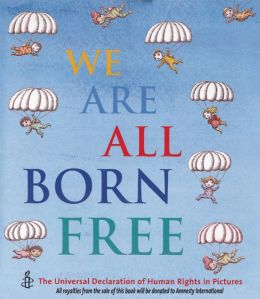What did your childhood look like?
What words would define your experience?
The Articles of the Convention on the Rights of the Child, passed in 1989, provide us with a picture of an ideal childhood by defining the rights of each and every child.
The first 42 articles outline the rights, while the remaining articles (43-54) outline implementation strategies and measures.
The first 42 articles outline the rights, while the remaining articles (43-54) outline implementation strategies and measures.
The Rights of the Child were derived from the Universal Declaration of Human Rights (UDHR), adopted by the United Nations in 1948, to affirm that all human beings should be treated equally and with respect. Eleanor Roosevelt chaired the committee that wrote the UDHR.
Many people felt there needed to be a separate and specific agreement to protect the rights of children and young people under the age of 18, particularly in countries where children are considered property. The result was the Articles of the Convention on the Rights of the Child.
UNICEF has published a quick fact sheet summarizing each of the Rights of the Child.
UNICEF has published a quick fact sheet summarizing each of the Rights of the Child.
The UNICEF website indicates that children have the right to the following:
Developed by Red Clay Writing Project (NWP), this book illustrates how teachers engaged students in critical inquiry and discussion, as well as classroom and community projects, around social justice issues related to the Rights of the Child. Issues addressed include immigration, racial equality, poverty, rights to culture, identity and freedom of thought.
This book and its editors will be featured live in Using U.N. Rights of the Child as a Critical Inquiry Framework on NWP Radio on April 11, 2013 at 7:00. The program will be archived and can also be accessed after the original air date by following the same link.
What do we want for our children?
What do we want for everybody's children?
- a safe childhood
- an early education
- healthy living conditions
- fair laws and practices
- a voice that is heard/represented
After learning about these documents recently, both in a professional book and again at a session at a professional conference, I was shocked to discover that all nations belonging to the United Nations have ratified the Rights of the Child except two: Somalia and the United States.
The United States has signed and adopted the agreement under Bill Clinton, but to date, not ratified the Rights.
Why?
Who would object to giving a child basic human rights?
Critics insists that by giving children the right to freedom of thought and religion, as well as other rights, the government usurps the power of parents to raise their children without interference. Parentsrights.org is one such organization.
President Obama and his administration are urging that the U.S. join the 193 nations that have already ratified the Rights of the Child.
President Obama and his administration are urging that the U.S. join the 193 nations that have already ratified the Rights of the Child.
There are numerous websites on the Internet offering information in support of the Rights of the Child, along with petitions can be signed to urge ratification. Change.org is just one.
There are also several books that help us initiate conversations with young people about both the Universal Declaration of Human Rights and the Rights of Children. (A quick search on the Internet will also result in many texts for adults, as well.)
 |
| The Universal Declaration of Human Rights by Ruth Rocha and Otavio Roth |
For teachers who are interested in learning more or using the Rights of the the Child as a curriculum framework from which to teach or foster inquiry projects on social justice issues, A Critical Inquiry Framework for K-12 Teachers: Lessons and Resources from the U.N. Rights of the Child, edited by JoBeth Allen and Lois Alexander is an excellent foundational resource.
Developed by Red Clay Writing Project (NWP), this book illustrates how teachers engaged students in critical inquiry and discussion, as well as classroom and community projects, around social justice issues related to the Rights of the Child. Issues addressed include immigration, racial equality, poverty, rights to culture, identity and freedom of thought.
This book and its editors will be featured live in Using U.N. Rights of the Child as a Critical Inquiry Framework on NWP Radio on April 11, 2013 at 7:00. The program will be archived and can also be accessed after the original air date by following the same link.
What do we want for our children?
What do we want for everybody's children?
Today's Deeper Writing Possibility
Make a list of words that describe an ideal childhood.
List rights to which you think every child (or person) is entitled.
How closely does your list match the Articles of the Conventions on the Rights of the Child?
Search for more information on the Articles of the Conventions on the Rights of the Child.
You may want to start with the basic links above.
What is your opinion--should the U.S. ratify this agreement? Why or why not?
Write persuasive or argumentative essay outlining your opinion and including your evidence and support.
Write a letter to your senator urging the action that you recommend.




No comments:
Post a Comment